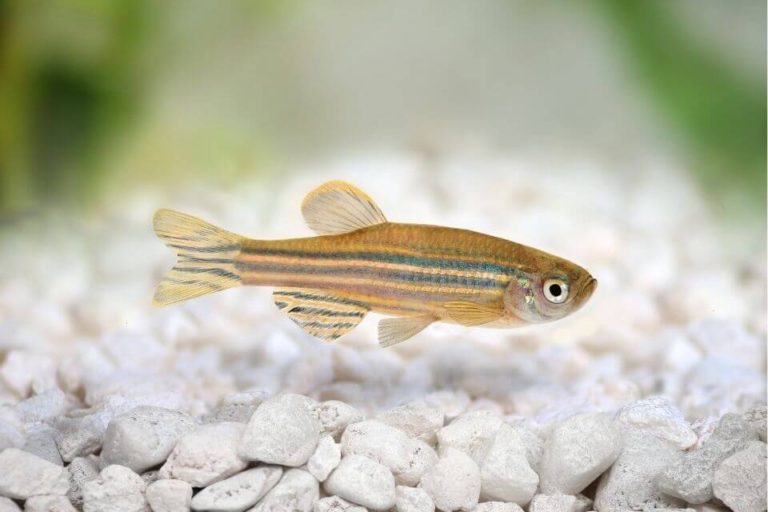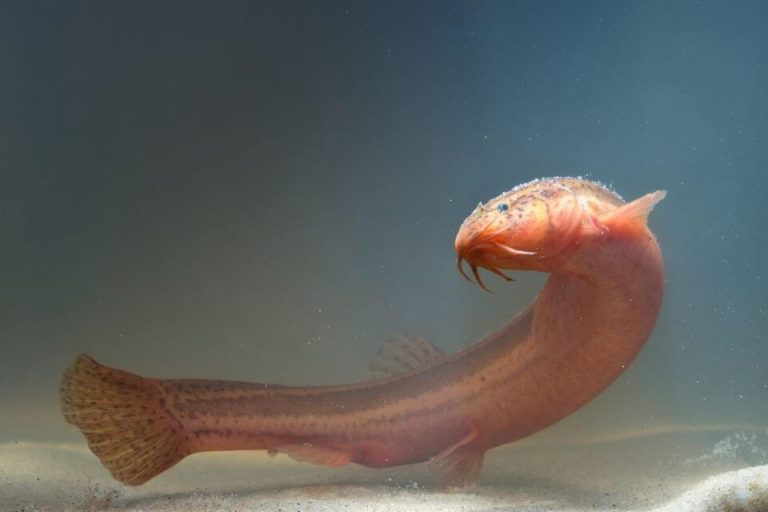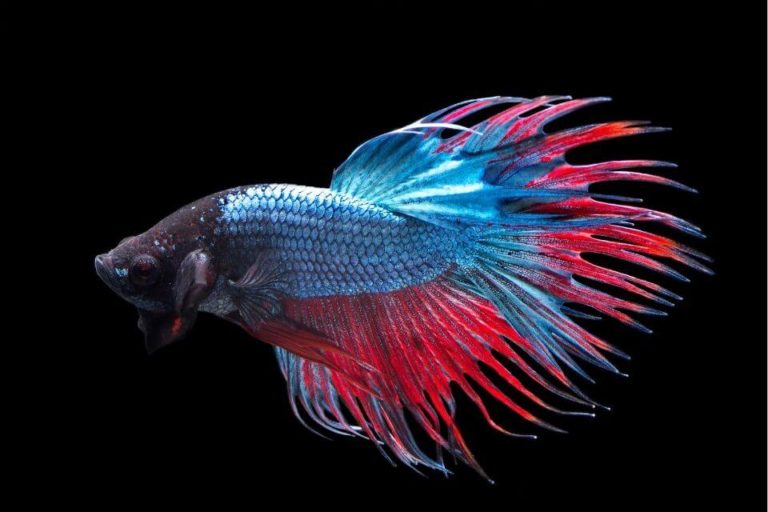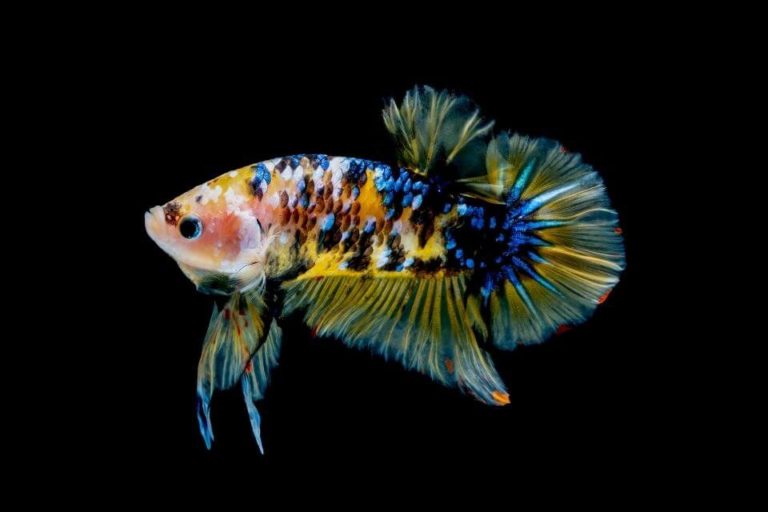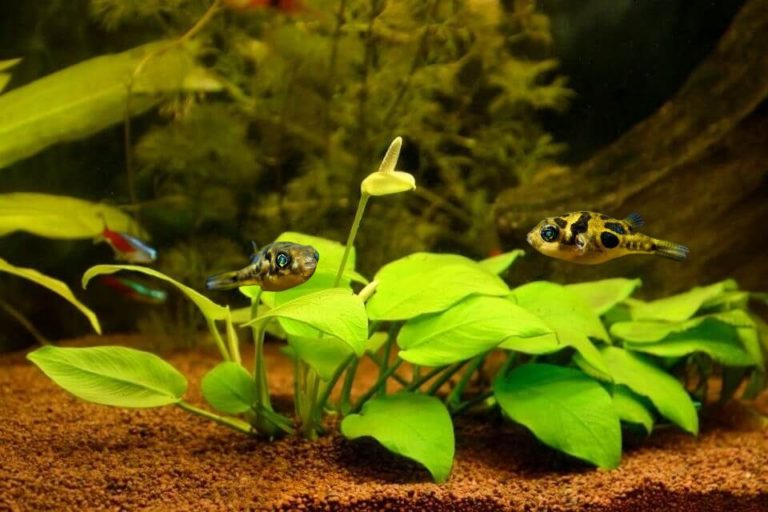Archer Fish Care Guide 101 – Tank Mates, Tank Size and Setup and More
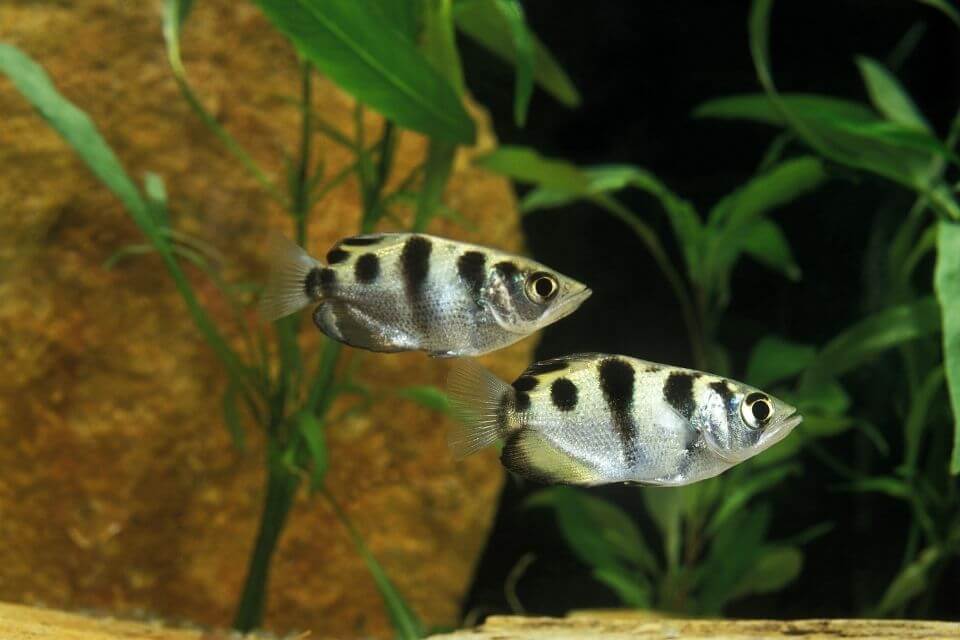
The Archer Fish, also known as the Spinner Fish, is a small family constituting seven species under the genus Toxotes. Archerfish care, guide, and species profile are important for all Aquarists to learn.
In this article, we will discuss in-depth and one step at a time all about the Archer Fish. Whether it is a docile seafarer or an intrusive member in a school of fish, how to take care of your Archer Fish cannot be overemphasized. Let’s dive in!
Species Overview
As mentioned above, Archer Fish is a small fish water species that fall under the Toxotidae fish family and are scientifically known as Labrus jaculator. Several things distinguish this group from other aquarium fish.
They are a brackish species that inhabit mangrove swamps and estuaries. But they can also be found far upstream in freshwater or the open ocean.
The second thing that distinguishes Archerfish from the rest is their ability to shoot water droplets from their mouths to trap or rather knock insects off low-hanging branches and leaves above the water. The fish’s aim is so accurate that it hits its target up to 5 feet (1.5 m) above the water level.
However, jumping out of the water to catch their prey is what they prefer most compared to “shooting” since the one that caught the insect is not necessarily one that will get to it first. The fish rarely show this natural behavior while in the aquarium.
Archer Fish is moderately peaceful and grows to a significant size, thus requiring an aquarium of around 75 gallons or more. Therefore, you are required to provide enough open swimming space.
Archerfish can live as long as ten years if the aquarium conditions are well kept for it to thrive. While in the wild, it can reach a size of around 12 to 16 inches long, while in captivity, it grows to a maximum of 7 inches long (5 inches is an average).
Origin And Distribution
Archerfish is a freshwater inhabitant commonly found in the Philippines, India, Australia, Thailand, and Polynesia. The fish prefers the dark areas in the waters where it can hide beneath the surface of the water, lying waiting to attack its potential prey.
Archerfish are found in thick vegetation, mostly where the plants are hanging above the water surface. Still, they can roam into the open sea, where the water is continually refreshed by the rivers.
Appearance And Colors
Archerfish have an elongated body, laterally compressed, making them look thin. The shape of their faces is pointed around the mouth. The narrow profile enables the fish to have an accurate aim when taking down their prey.

There are several species, each with its unique band pattern. The normal or rather common banded Archerfish has a body that looks silvery and with gold-like tink across the back with four or six bands that are vertically running across the body.
The dorsal and anal fins are located far back on their body, while the tail has a slightly rounded edging. Their back is brown or yellow/greenish, while their flanks are pale grey or silver.
Archer Fish Size
An adult archerfish can grow between 10 to 12 inches in length in the wild. However, they hardly extend more than seven (7) inches when in captivity. Their dorsal fin sits further back than most fish, and their tails are rounded.
Archer Fish Lifespan
Archerfish have a short lifespan of about 3 to 5 years in the wild but can reach up to ten (10) years in captivity and under expert care.
While most of the species are common, they are also threatened by the diminishing habitats due to the clearing and destruction of mangroves for aquaculture. They are also heavily consumed in some countries and heavily collected for the aquarium trade.
It is worth noting that Archerfish can only survive in fresh water for a short period. Prolonged exposure to non-brackish water eventually leads to a limited lifespan, mostly in non-adults.
Therefore, if you are planning on setting up an aquarium, remember it is a salty environment that is close to its natural habitat for an extended lifespan.
Behavior & Temperament
The fish prefers to live in shoals or groups where they move about and hunt together for what to eat. They prefer to be in groups of five with similar body sizes, but at times they can be many.
While in their groups, they attack smaller fish for their food. Interestingly, they know how to hide from birds that pose a threat to them.
The name “Archer” has been given to the fish for their ability to “shoot down” insects and other small creatures resting on floating debris, foliage, or mangrove roots by expelling jets of water from their mouth.
The bold black and white markings are ideal for camouflaging them in the dark water under the mangrove vegetation. The fish can squirt about seven times in quick succession with the jets of water reaching up to 3 meters, but their accuracy is up to about 1.5 meters.
Fish that are only 1.2 inches can spit, but their jets can only reach four to eight inches. They swim in shooting parties with shootings targeting the same prey.
They can be a little temperamental or even aggressive, and therefore, it is important to check compatibility before introducing a new mate into their tank.
Archer Fish Care
The Archerfish species is a very nice and interesting fish, but still, they can be quite challenging to keep in your home aquarium for several reasons. First, they tend to thrive better in brackish environments than freshwater.
It has proven to be somewhat challenging to achieve the perfect balance of salinity for your brackish species, but this does not mean that it is not possible. Additionally, these species go for live prey.
– Archer Fish Tank Size
To set up your Archer Fishtank, you need a fairly large aquarium of at least 55 gallons, but the ideal size should be something closer to 90 gallons.
These are schooling fish, and therefore, you need a larger tank that can accommodate a large group of them while keeping in mind that they need to enjoy a lot of open swimming space.
With this in mind, the middle part of your tank should be free of decorations, and they should only be concentrated around the edges of your tank. The tank height should be at least 18 inches. It is best if your tank is filled up to two-thirds with brackish water. This is the minimum requirement for a grown-up fish.
It would be better if your tank is taller for your school of Archerfish. This allows them more open space above the water level where they can jump habitually. Ensure that the tank is kept shut to prevent the fish from falling out.
– Archer Fish Tank Setup
When taking any fish from the wild into captivity, you need to meet certain conditions for the fish to survive. Some of these important parameters include pH, temperature, food, lighting, filters, oxygen levels, and more.
To have a healthy Archer in your aquarium, ensure you follow the following tank requirements and tips:
Archer Fish prefer brackish waters, which means that you will need to cover the bottom of your tank with some substrate. You can consider using silt or sand to create this environment keeping in mind that if you go for live plants.
You will require about an inch thick substrate. Aquarium plants are also important for providing hiding places similar to their natural habitats.
Consider adding a bit of lighting to make sure that your aquatic pets receive similar conditions as they would experience in their natural environment. Bright to moderate lighting is okay since the fish will thrive in either condition.
The fish requires clean water, which means that your filtration system should be at its best to maintain their health. The fish prefer water temperatures between 68 to 82 degrees Fahrenheit. Try to change the water at least once a week.
Change about thirty percent (30%) of the water because the fish will not consume anything that falls below the water surface, knowing that it is very common for feeds or rather matter to slide to the bottom of your tank, thus contaminating the water.
The fish are not hard to care for, considering that they do not need numerous decorations or additional materials in their tanks.
Since archerfish prefer plenty of free space, include just a few pieces of smooth river rocks and driftwood or live plants. The plants you choose should tolerate brackish water. Do not overcrowd your tank with decorations.
– Water Conditions And Parameters
It would be best if you also aimed to keep the tank at a pH level of about 7.0 to 8.0. This means that you will need to add salt, that is, some brands of marine salts, to keep the water at the ideal salinity.
Keep the salinity level between 1 to 2 percentage, and you can achieve this by adding about 8 to 12 teaspoons of salt per 100 gallons of water in your fish tank.
– Suitable Aquarium Plants
Live plants are very suitable for your aquarium. The best plants are those that tolerate brackish water. The suitable aquarium plants include Anubias and Java Fern to decorate your tank.
You can also choose to drape your plant on each end of the leaves so that they can hang down into the water.
– Possible Diseases And Prevention
When it comes to the care of Archerfish, they are very prone to infectious and parasitic diseases that aquarium fish encounter. The diseases can be prevented by keeping the water quality high and limiting physical stress.
Below are the most common diseases that affect the Archer Fish:
- Dropsy: This is a bacterial infection that can also be caused by malnutrition. The diseases cause bloating and raised scales. The fish can be given medication, but the best way to treat and even prevent the disease is by improving food and water quality.
- ICH: This disease is also known as white spot, and the signs of infection are shown on the fins of the fish. The fins look as if they are covered in salt. This issue can be prevented by monitoring the quality of water in your tank. Also, you can prevent it by increasing the temperature of your tank.
- Fin Rot: This is a common aquarium disease that results in rotting fins, lethargic behavior, and loss of appetite. The disease is caused by aggressive fish behavior such as fin nipping and bullying. It can also be caused by poor water quality and bacteria. The fin can be treated with medication, but the pest practice is separating aggressive fish and improving the quality of food.
Archer Fish Diet And Feeding
It is better if you feed your Archer Fish with live prey. The fish eat things like crickets, mealworms, houseflies, and fruit flies. They can even eat frozen foods or brine shrimp.
Additionally, the fish can be fed with flakes or pellets but always keep in mind that they prefer live foods. You will note this since they eat voraciously and more quickly than the alternative.
Gender Differences
Gender dimorphism in Archerfish is not well elaborate. It has not yet been established how to differentiate between a male and a female.
Archer Fish Breeding
The breeding patterns of archerfish are not well known, and because of this, most people do not breed them. Additionally, there is no established way of sexing archerfish which is another challenge if you want to breed them.
The fish mature sexually after about one to two years, with breeding occurring in their natural environment during the wet season. The fish are known to gravel saltwater reefs for spawning.
The female lays a minimum of 20,000 eggs which float on the surface of the water and then less in less than a day and precisely twelve hours.
Although these fish are prolific breeders in their natural habitats, it is difficult to breed them in captivity. You will have to transfer the eggs to another separate tank to ensure that the fry survives.
The fries can be fed with small insects, but they will need to grab this food from the surface of the water. They will not be able to hunt for quite some time.
Archer Fish Tank Mates
Archerfish are known to be a peaceful breed, but you should avoid species that are smaller than the archerfish since they are known to eat anything smaller than them.
When selecting mates, choose a species that can survive in a brackish environment. Some of the species that can cohabitate with archerfish include Monos, Mollies, Puffers, Mudskippers, Gobies Scats, and Four Eye Fish.
What Is Special About The Archer Fish?
The Archerfish is unlike any other fish since it finds its prey dwelling outside the water. A butterfly, insect, or a similar creature is the target of this powerful fish that knocks down its prey with a powerful spray of water.
Archerfish searches for its prey that is moving around above the water level. With on-point accuracy, it knocks the prey off the twig with a powerful jet of water.
The prey falls, and the fish swims towards the direction in which the prey hits the water to retrieve its meal. The feat of this fish hitting its prey is incredible, and the fact that it can repeat this over and over again is remarkable.
Are Archer Fish Aggressive?
After buying your Archerfish, you might be wondering which other species you can pair with your fish. The truth is that Achers can be a bit temperamental and even aggressive.
Thus the need to confirm compatibility before pairing them with other species. They should be kept with species of the same size to avoid bullying.
How Far Can Archer Fish Spit?
Archerfish use the same mouth maneuvers underneath the water and produce jets that can reach up to 2 meters with an accuracy of 1.5 meters to dislodge their prey.
Can Archer Fish Live In Freshwater?
Archerfish are mostly brackish water fish, but they have been known to tolerate completely freshwater, but this is only for a specific time. However, it is not recommended to keep the fish in a freshwater environment.
Are Archer Fish Hard To Keep?
Archerfish can be quite challenging to keep in your home aquarium because they tend to survive in brackish habitats. Striking the balance of salinity with your water is not an easy feat to achieve, but it is possible.
As long as you apply the required aquarium care tips, you will ensure maximum survival chances for these amazing creatures.
Can You Keep an Archer Fish as A Pet?
Yes, Archerfish can be kept as pets. They are collected from the wilderness for the pet trade. In the wilderness, they have a lifespan of 3 years, but under expert care, they can attain up to 10 years.
Where Can I Buy an Archer Fish?
You can inquire about the availability of Archerfish on online stores such as eBay or suppliers who purposely deal with the sale of fish as pets. Websites such as www.aquariumfishsale.com also provide information about the sale of archerfish.
How Much Is an Archer Fish Cost?
The price of one piece of archerfish is around $20, but this price can change depending on the number of pieces you intend to buy. If you buy in bulk, you might get them at a discounted price.
Conclusion
Archer Fish is famous because of its unique hunting methods. Overall, these are remarkable species with unparalleled hunting skills in the aquatic world.
You can train this fish to feed on live food in the aquarium by giving it live food hanging on a rod through the top of your tank.



